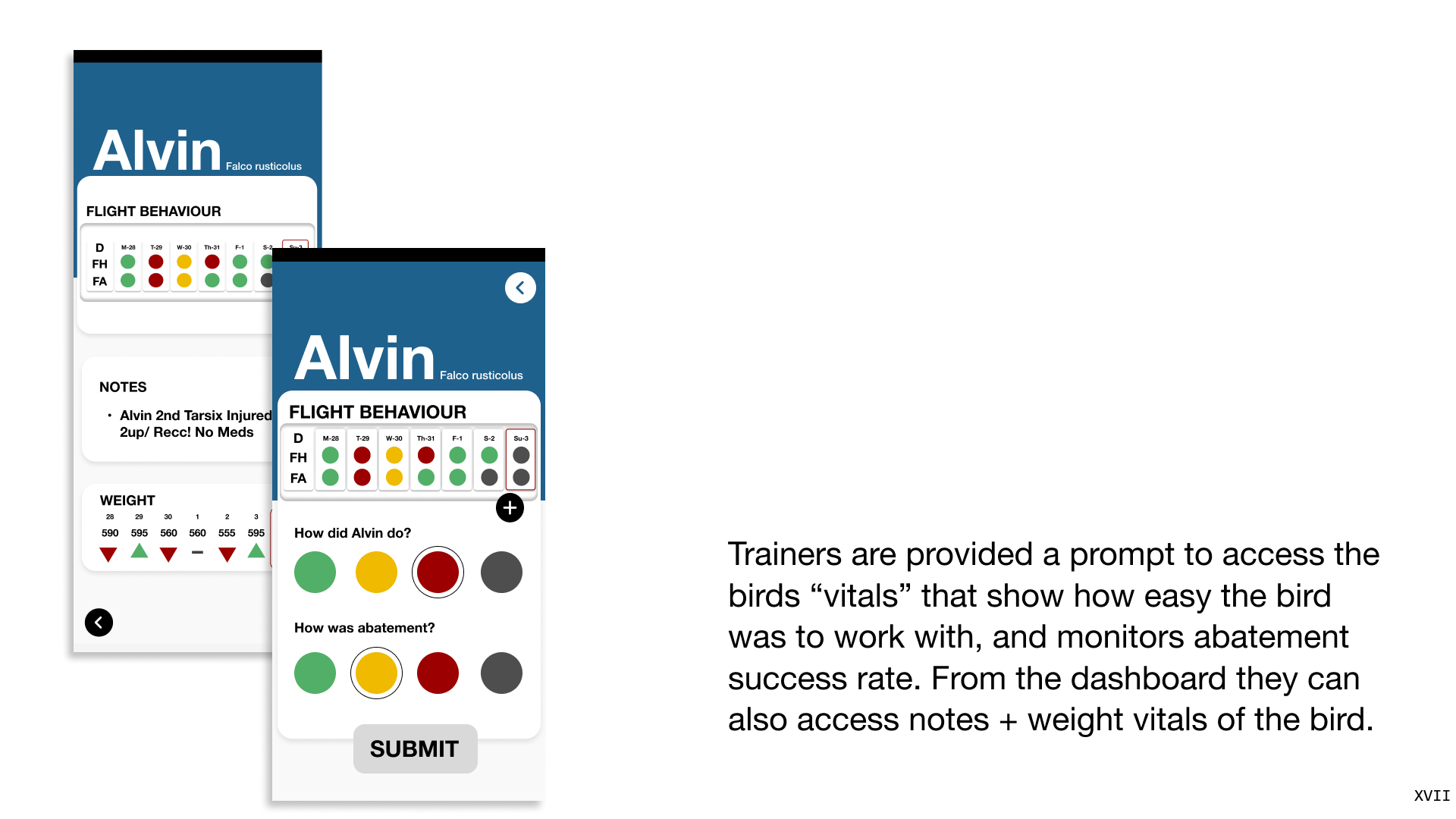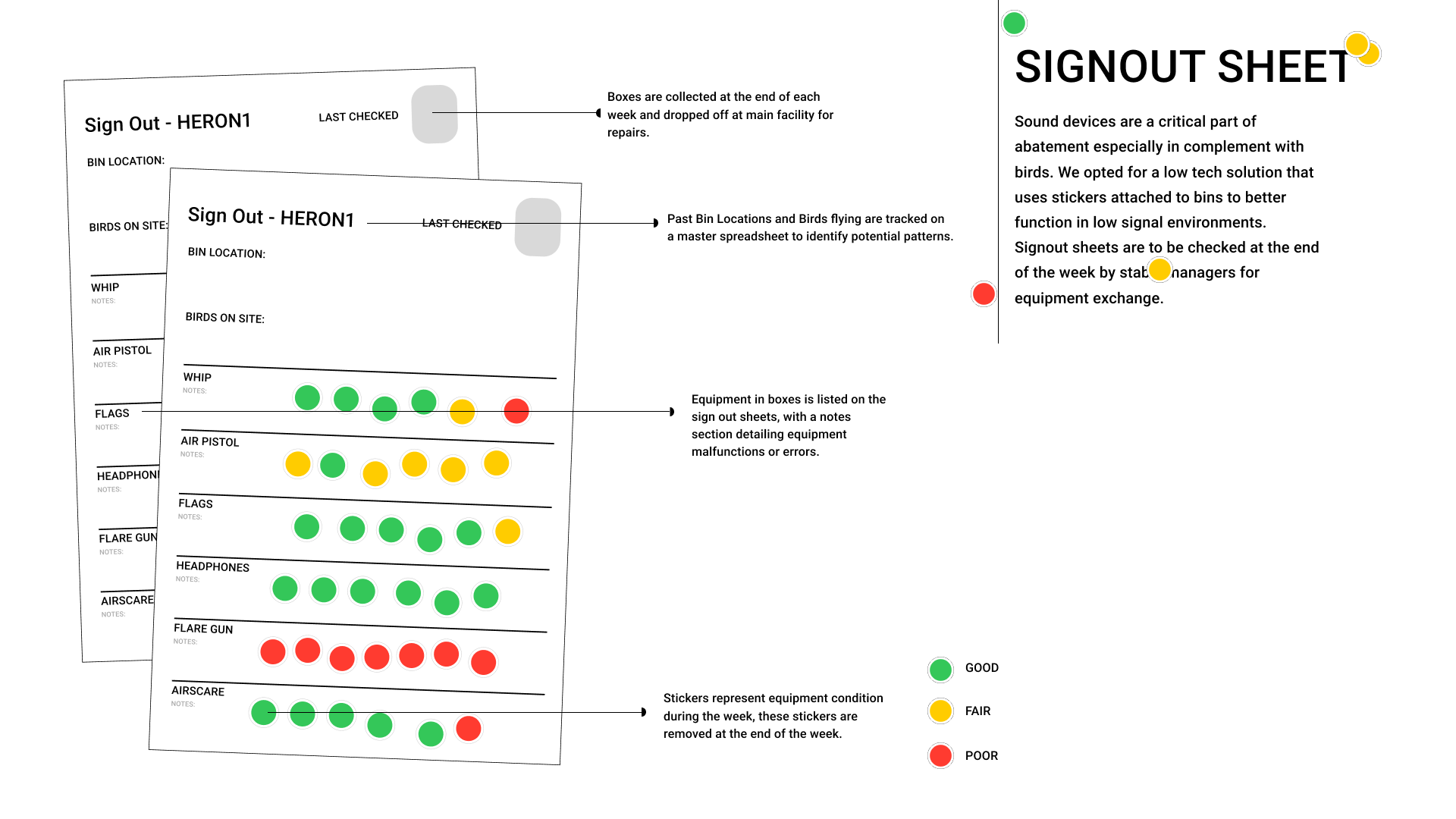Critical Question
*How would we make the morning rush easier for people that work with birds of prey?
Design Process
Our team during the initial stages decided to focus on communication.From talking to the Raptors it was decided that we needed to do more fieldwork + research to better understand the frictions of the current system.
Through our further research we found several points of contact among staff that lead to frustrating moments:
Hybridized Knowledge Communications
During our first site visit we noticed that a lot of the communication within the team with mostly physical, small hand written notes, binders filled with informations and other errata. In our discussions as a group we looked at shifting how information was percieved, moving from strictly written to strictly digital might be too big of a jump for a team that works with animals, thus we decided to compromise.
A hybrid method of communication also offers distinct advantages than having everything purely digital. It offers greater accessibility across trainers, and it allows trainers to quickly cross reference data and come to conclusions during preflight checks, allowing users to quickly move from one task to the next.
User Experience
Trainers have options upon arriving at the facility for site prep, upon entering the facility and commencing site prep trainers can visually estimate the behavior of the bird before prep through the round up sheets at the front of their enclosures. Bird behavior and bird weight are visualized as “colored blocks” for the past week, allowing trainers to assess future behaviors based on present patterns.
Reframed Problem
*How do we make recording data to a master repository easier and more memorable for trainers?
Our Intervention
Our proposal was to improve the communication of the trainers with a glance based communication system that would be printed in the enclosure and paired with an app. By pairing analog with a digital parent application trainers would be better equipped to notice patterns in behavior or feeding that needed to be worked on before major flight at sites. Combining physical and digital touchpoints in pre flight activities and routine checks, we can reinforce good data hygiene and give trainers different places to spot errors while transitioning them to the potential of a fully digitized system.
Exsisting Frameworks as Tacit Knowledge
To illustrate good and bad days we thought of two ways we could drive home glance-ability in our worksheets + application user interactions.
- Using a traffic light system to highlight good and bad days and to describe behavior and abatement of each bird in conjunction with their personalities.
- Using arrows to reinforce weight gain and loss of birds that fly at multiple facilities around metro-Vancouver.
We felt an existing traffic framework provided a clearer way to allow trainers to view past behaviors and flight assignments at a glance without too much thinking, allowing trainers to be easily onboarded through the system.
In addition to bird abatement trainers also used "sound devices" (like whips, air pistols, and horns) to help with abatement as well. During our interviews a problem of "sign out" came up with 75% of the trainers mentioning that it was hard to find appropriate equipment during the morning rush.
Check in and Check out
A "library" system was proposed using exsisting materials to better ease friction between trainers during the morning rush. Since sound devices (see above) were stored in bins that were shipped to fieldsites (along with birds) we opted for a lower tech solution that used stickers and laminated paper attached to the bins. This allowed for major quality of life improvements. Allowing trainers agency to participate in spotting errors also allowed sticker papers to be accounted for within low tech / low signal environments.
- Trainers could visually check the bins without opening them noting broken equipment and missing parts before checking out the bin.
- Since bins are switched in and out at the end of each week, shift managers could visually keep track of equipment that was broken and switch it out during the next weeks upkeep.
The strength of a bin signout sheet gave us an ability to offload the morning rush from many trainers, shifting the responsibility to allow for more time prepping the animals for abatement projects. Bins could therefore just be grabbed with little thought.
.jpg)


